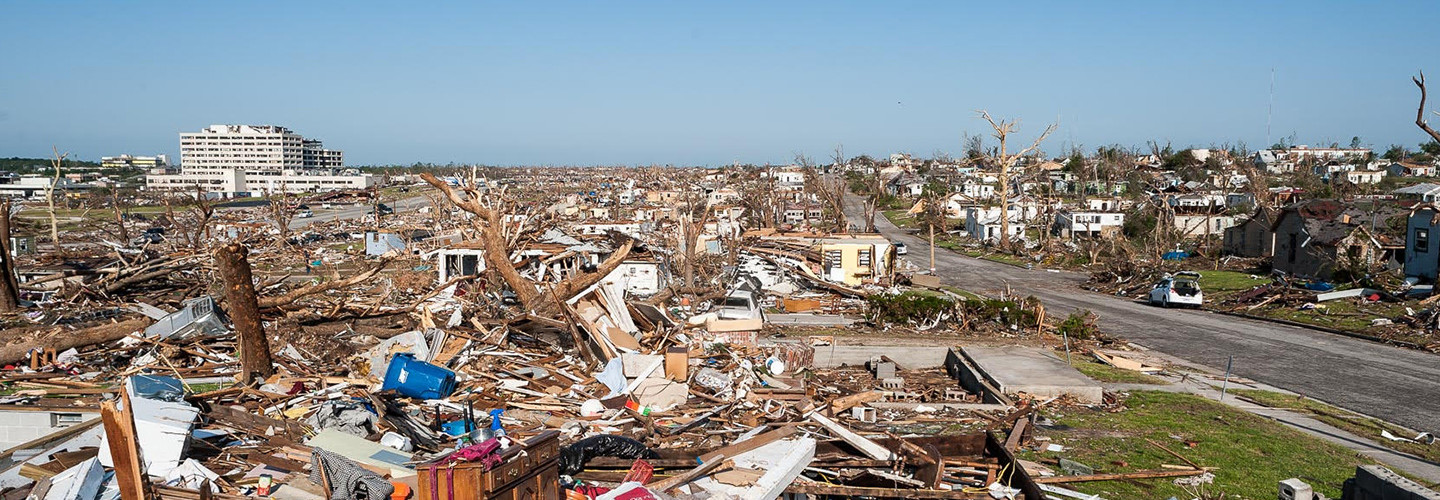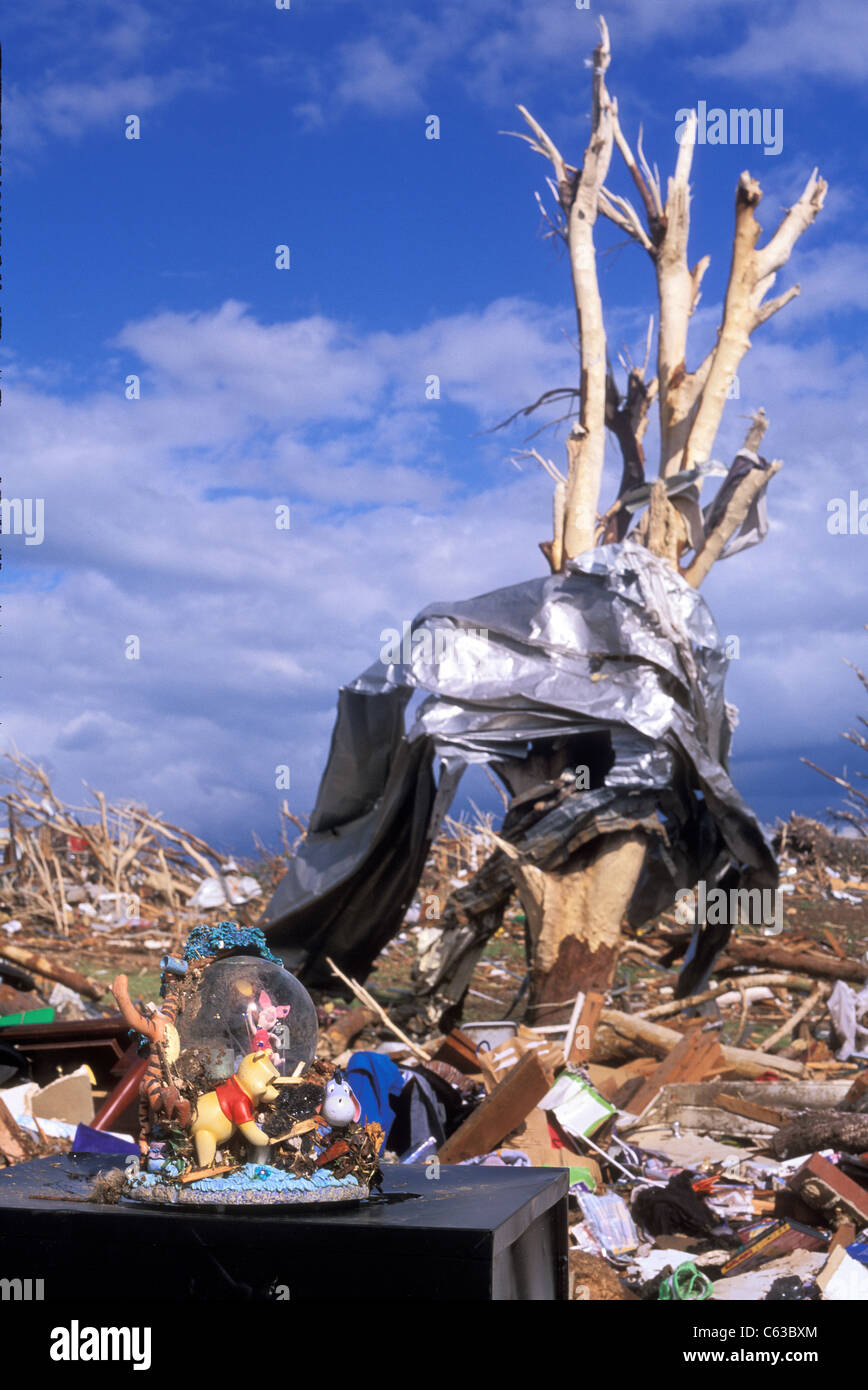Some impressive vegetation damage here from Joplin near the Dillon's grocery store.It was not, surprisingly. The first homes to officially be rated EF5 were just west of Greenbriar Nursing Home.
Navigation
Install the app
How to install the app on iOS
Follow along with the video below to see how to install our site as a web app on your home screen.
Note: This feature may not be available in some browsers.
More options
-
Welcome to TalkWeather! We see you lurking around TalkWeather! Take the extra step and join us today to view attachments, see less ads and maybe even join the discussion. CLICK TO JOIN TALKWEATHER -
Current Tropical Systems Melissa
You are using an out of date browser. It may not display this or other websites correctly.
You should upgrade or use an alternative browser.
You should upgrade or use an alternative browser.
Significant Tornado Events
- Thread starter locomusic01
- Start date
Juliett Bravo Kilo
Member
I think it's happened lots with Dixie's strongest tornadoes, there's lots of older outbreaks where you read about trenches and the like being dug, of course no photographs. One of the issues I think is that Dixie tornadoes are typically fast moving, so the cores don't have as much room to leave ground scouring, and when they do it's narrow, patchy and likely not recognized by most photographers.Not doubting you, but can you cite other examples? It seems to me that if it was that easy to occur, we'd have seen plenty of it in Dixie alley's strong tornadoes, and I haven't seen that. This clay does tend to form layers, and when dry clumps or chunks separated by cracks, so those would dislodge similarly but layers underneath those would be more homogeneous and stronger.
The wall damage in Joplin is impressive, and yes there was was a house on a street corner in the Hackleburg tornado where the exposed concrete 'walk out' basement wall was similarly destroyed. If my memory serves me correctly, that one was pushed outward and the remains flung dozens of yards away mostly as a whole. That was some of the most impressive damage from that tornado to me.
In terms of other examples, have you seen of my Guin posts? They kind of show how little craters/patches of scouring in spots. I'll go back and dig some stuff up for you in a bit.
Another factor is that the soil in southern outbreaks likely is softened up by heavy rain and melted snow beforehand, as Dixie outbreaks often occur in the early spring.
Juliett Bravo Kilo
Member
Going through my Guin collection & noticed some details in some pics I haven't before; colorizing definitely helps bring them out.
One, this pic of the ground scouring with the overturned car. If you look near the bottom of the pic you can see what looks like bricks either shattered in half or speared into the ground, reminds me of a pic from Marion, ND aka "Noot Farm" tornado and some other pics from Smithville or Hackleburg. Note also the little area filled with water, maybe an area of scouring so deep rainwater collected in it? Not sure.

In this colorized pic you can see a person standing in the rubble, for a sense of scale:

In this pic you can see grass, ground, possibly debarked shrubs & a particularly intense, narrow band of wind rowing in the background (where the "historic images" logo is over):

Look for the red arrows in both pics to see these details.
In this pic you can see some ground scouring, look more like a patch or crater of it, which is often common with Dixie events but hard to know for sure:

In this colorized pic you can see a metal frame with wheels on it twisted like a slinky lying amidst this destroyed neighborhood. Not sure if frame of a vehicle or mobile, but definitely noteworthy. I've placed red arrows for visual assistance:

One, this pic of the ground scouring with the overturned car. If you look near the bottom of the pic you can see what looks like bricks either shattered in half or speared into the ground, reminds me of a pic from Marion, ND aka "Noot Farm" tornado and some other pics from Smithville or Hackleburg. Note also the little area filled with water, maybe an area of scouring so deep rainwater collected in it? Not sure.

In this colorized pic you can see a person standing in the rubble, for a sense of scale:

In this pic you can see grass, ground, possibly debarked shrubs & a particularly intense, narrow band of wind rowing in the background (where the "historic images" logo is over):

Look for the red arrows in both pics to see these details.
In this pic you can see some ground scouring, look more like a patch or crater of it, which is often common with Dixie events but hard to know for sure:

In this colorized pic you can see a metal frame with wheels on it twisted like a slinky lying amidst this destroyed neighborhood. Not sure if frame of a vehicle or mobile, but definitely noteworthy. I've placed red arrows for visual assistance:

Last edited:
Was Guin a drillbit?Going through my Guin collection & noticed some details in some pics I haven't before; colorizing definitely helps bring them out.
One, this pic of the ground scouring with the overturned. If you look near the bottom of the pic you can see what looks like bricks either shattered in half or speared into the ground, reminds me of a pic from Marion, ND aka "Noot Farm" tornado and some other pics from Smithville or Hackleburg. Note also the little area filled with water, maybe an area of scouring so deep rainwater collected in it? Not sure.
View attachment 31165
In this colorized pic you can see a person standing in the rubble, for a sense of scale:
View attachment 31166
In this pic you can see grass, ground, possibly debarked shrubs & a particularly intense, narrow band of wind rowing in the background (where the "historic images" logo is over):
View attachment 31167
Look for the red arrows in both pics to see these details.
In this pic you can see some ground scouring, look more like a patch or crater of it, which is often common with Dixie events but hard to know for sure:
View attachment 31168
View attachment 31168
In this colorized pic you can see a metal frame with wheels on it twisted like a slinky lying amidst this destroyed neighborhood. Not sure if frame of a vehicle or mobile, but definitely noteworthy. I've placed red arrows for visual assistance:
View attachment 31169
- Messages
- 4,598
- Reaction score
- 9,470
- Location
- California, United States
- Special Affiliations
- SKYWARN® Volunteer
I have a ton of stuff from Joplin, and (in my opinion) the tornado more or less serves as the prime example of why I think comparing F5/EF5's and trying to weed out the strongest ones is virtually impossible.
Think about which (E)F5 serves as the poster-child for 'textbook' contextual damage:
Parkersburg's granulation? Joplin matches it.
Bridge Creek-Moore's vehicle damage? Joplin matches it.
Being in a rare club of tornadoes that actually punched out poured concrete basement walls?
Extreme debarking?
Scouring - which in Joplin was more impressive than a lot of people realize?
Other sorts of incredible phenomena - like how a pile of gurneys from St. John's was thrown six blocks against the forward motion of the tornado?
You get the point. It's why I find ranking (E)F5's to be so incredibly difficult, except in very rare cases where there was something truly above and beyond about the tornado, like Smithville's forward speed and Bridge Creek's radar measurements.
Think about which (E)F5 serves as the poster-child for 'textbook' contextual damage:
Parkersburg's granulation? Joplin matches it.
Bridge Creek-Moore's vehicle damage? Joplin matches it.
Being in a rare club of tornadoes that actually punched out poured concrete basement walls?
Extreme debarking?
Scouring - which in Joplin was more impressive than a lot of people realize?
Other sorts of incredible phenomena - like how a pile of gurneys from St. John's was thrown six blocks against the forward motion of the tornado?
You get the point. It's why I find ranking (E)F5's to be so incredibly difficult, except in very rare cases where there was something truly above and beyond about the tornado, like Smithville's forward speed and Bridge Creek's radar measurements.
Sawmaster
Member
Great Guin pics. Scouring? Yes, but trenching? I didn't see any at much depth. I'll take your word for the other cases you mention if they're trenching deeply as I'm speaking of but I still believe it indicates a very strong tornado (which Guin certainly was).
Guin doesn't get the 'press coverage' it deserves even today and you rarely see it mentioned in anyone's "top" lists.
Guin doesn't get the 'press coverage' it deserves even today and you rarely see it mentioned in anyone's "top" lists.
Juliett Bravo Kilo
Member
Great Guin pics. Scouring? Yes, but trenching? I didn't see any at much depth. I'll take your word for the other cases you mention if they're trenching deeply as I'm speaking of but I still believe it indicates a very strong tornado (which Guin certainly was).
Guin doesn't get the 'press coverage' it deserves even today and you rarely see it mentioned in anyone's "top" lists.
Problem is that Guin was a fast-moving tornado with a very narrow core. Also, TornadoTalk is going to have a more thorough article on it at some point, so we'll have more evidence of Guin in terms of trenching/scouring. Really, trenching is a kind of scouring, so it's kind of getting nitpicky here. Yeah, I'll dig up more stuff on Dixie alley scouring tonight and tomorrow. I'll see what Grazulis has on Guin, too.
Western_KS_Wx
Member
I think you hit the nail on the head with that, essentially every EF5 has something in common, or that ‘look’ that’s synonymous with tornadoes of EF5 intensity.I have a ton of stuff from Joplin, and (in my opinion) the tornado more or less serves as the prime example of why I think comparing F5/EF5's and trying to weed out the strongest ones is virtually impossible.
Think about which (E)F5 serves as the poster-child for 'textbook' contextual damage:
Parkersburg's granulation? Joplin matches it.
Bridge Creek-Moore's vehicle damage? Joplin matches it.
Being in a rare club of tornadoes that actually punched out poured concrete basement walls?
Extreme debarking?
Scouring - which in Joplin was more impressive than a lot of people realize?
Other sorts of incredible phenomena - like how a pile of gurneys from St. John's was thrown six blocks against the forward motion of the tornado?
You get the point. It's why I find ranking (E)F5's to be so incredibly difficult, except in very rare cases where there was something truly above and beyond about the tornado, like Smithville's forward speed and Bridge Creek's radar measurements.
IIRC a while back in the thread this topic got brought up and what really separates EF4 and EF5 tornadoes, I don’t remember exactly what was said but it goes along with your point of ranking EF5’s being essentially impossible. It also is worth mentioning that virtually every tornado rated EF5 are among the most violent tornadoes in recorded history, and could all be deserving of a place in the top 20 strongest tornadoes in my opinion.
Going back to that ‘look’ exclusive to EF5 tornadoes, and why ranking them is pretty much impossible, here’s 3 examples of contextual damage in residential areas from past EF5’s that all look pretty similar.
Greensburg:



Parkersburg:



Joplin:



Attachments
- Messages
- 4,598
- Reaction score
- 9,470
- Location
- California, United States
- Special Affiliations
- SKYWARN® Volunteer
Continuing the Joplin discussion, here are some new photos I don't think I've shared before:
One of the few ground level views I could find of the area (mentioned by @Western_KS_Wx) directly west of the Greenbriar Nursing Home. Well built homes were leveled with some swept clean, and damage was rated EF5.

Photo of a tree that was darn near completely debarked:

Extreme debris granulation, very Parkersburg-esque:
Anchored brick building swept clean
Some more trees that are about as thoroughly debarked as can be:

Grass scouring:
Wood impaled into the ground like spears near Joplin High School. Almost looks deliberate, as if done by human hands:
One of the few ground level views I could find of the area (mentioned by @Western_KS_Wx) directly west of the Greenbriar Nursing Home. Well built homes were leveled with some swept clean, and damage was rated EF5.

Photo of a tree that was darn near completely debarked:

Extreme debris granulation, very Parkersburg-esque:
Anchored brick building swept clean
Some more trees that are about as thoroughly debarked as can be:

Grass scouring:
Wood impaled into the ground like spears near Joplin High School. Almost looks deliberate, as if done by human hands:
Western_KS_Wx
Member
Here’s some of the Joplin stuff I’ve got, some may have already been posted before but worth sharing nonetheless.
Starting with a different view of the home that had its basement wall collapse. Some very high-end vegetation damage surrounding the site, very evident EF5 winds occurred here.

Not for sure the exact location here, but the tree and shrub damage in the back is absolutely upper-echelon.

Aerials of damage in and around Joplin High School showing the seemingly endless amount of homes swept away.


Ground view from Franklin Technology Center facing the High School.

The first image here is one of the most stunning tornado devastation photos I’ve ever seen. Numerous trees nubbed and completely debarked, and entire rows of homes simply wiped away.


Aerial of the intersection of East 20th Street and Connecticut Avenue, damage here was rated EF5.

Total devastation near Rangeline Road.

Bags of mulch and other material ripped open and a completely debarked tree in the background

To think that the rating of this tornado was disputed just makes me lol, but that’s a topic for another thread.
In all seriousness, Joplin deserves to be in the discussion of most violent tornadoes ever recorded. The damage wrought by this leviathan was almost beyond comprehension, and I’d love to see more photos you have @TH2002.
Edit: Another thing I think doesn’t get talked about nearly enough, the death toll of 161 is in my opinion relatively low considering the sheer magnitude and scope of total wipeout in such a densely populated area. It’s really a miracle the toll didn’t vastly exceed 200.
Starting with a different view of the home that had its basement wall collapse. Some very high-end vegetation damage surrounding the site, very evident EF5 winds occurred here.

Not for sure the exact location here, but the tree and shrub damage in the back is absolutely upper-echelon.

Aerials of damage in and around Joplin High School showing the seemingly endless amount of homes swept away.


Ground view from Franklin Technology Center facing the High School.

The first image here is one of the most stunning tornado devastation photos I’ve ever seen. Numerous trees nubbed and completely debarked, and entire rows of homes simply wiped away.


Aerial of the intersection of East 20th Street and Connecticut Avenue, damage here was rated EF5.

Total devastation near Rangeline Road.

Bags of mulch and other material ripped open and a completely debarked tree in the background

To think that the rating of this tornado was disputed just makes me lol, but that’s a topic for another thread.
In all seriousness, Joplin deserves to be in the discussion of most violent tornadoes ever recorded. The damage wrought by this leviathan was almost beyond comprehension, and I’d love to see more photos you have @TH2002.
Edit: Another thing I think doesn’t get talked about nearly enough, the death toll of 161 is in my opinion relatively low considering the sheer magnitude and scope of total wipeout in such a densely populated area. It’s really a miracle the toll didn’t vastly exceed 200.
Last edited:
Sawmaster
Member
I wouldn't say it's any more nitpicking than using DOD on a DI to discern between an ef-4 and an EF-5. Scouring is common; deep trenching is not. Would love to see more about Guin but I don't do paywalls so let's see how that goes.Problem is that Guin was a fast-moving tornado with a very narrow core. Also, TornadoTalk is going to have a more thorough article on it at some point, so we'll have more evidence of Guin in terms of trenching/scouring. Really, trenching is a kind of scouring, so it's kind of getting nitpicky here. Yeah, I'll dig up more stuff on Dixie alley scouring tonight and tomorrow. I'll see what Grazulis has on Guin, too.
- Messages
- 4,598
- Reaction score
- 9,470
- Location
- California, United States
- Special Affiliations
- SKYWARN® Volunteer
So, something pretty fascinating - barely a week ago, a high quality version of an early tornado photo was uploaded by someone on Facebook. The photo dates from 1903 and shows a tornado near Goddard, KS:


Another photo of a Kansas tornado. Some discrepancies with the date - the Universal History Archive has a date of 1919, while NOAA has a date of 1917. Whatever the case, it's a beautiful photograph:

And while I'm at it, here is a series of photos of the 1922 Austin tornadoes, all in the highest quality I could find:







Another photo of a Kansas tornado. Some discrepancies with the date - the Universal History Archive has a date of 1919, while NOAA has a date of 1917. Whatever the case, it's a beautiful photograph:

And while I'm at it, here is a series of photos of the 1922 Austin tornadoes, all in the highest quality I could find:





Aaron Rider
Member
What's the argument against Spencer being F5?Stuff I got from Spencer 1998:
Severe vegetation damage at the Spencer water tower. It looks like granulated debris is covering the ground:
View attachment 31157
Another view of the Spencer water tower, showing what looks to be an impact mark, but I’m unsure:
View attachment 31158
Top middle and bottom right shows 2 homes swept away, first of which appears to be a slab foundation.
View attachment 31159
Aerial of Spencer. This is one of the photos that makes me wonder why Spencer is a “marginal F4”:
View attachment 31160
Edit: Here they are. I think the first photo shows cracked stone stairs:
View attachment 31162
Another view of the water tower:
View attachment 31163
Mobile home wrapped around tree. Might be the least impressive of these photos:
View attachment 31164
phant
Member
Does anybody know where I can find the rest of these aerials (from the same photographer) from Guin? I tried searching through Texas Tech and couldn't find anything, however, I don't know where to look.
I'm also looking for Brandenburg aerials that were said to be on Texas Tech, but I couldn't find those either. It would be much appreciated if anybody has a link to either of these or has the images themselves.
Here are the 2 Guin aerials I have. I'm pretty positive there are more from where they came from.


I'm also looking for Brandenburg aerials that were said to be on Texas Tech, but I couldn't find those either. It would be much appreciated if anybody has a link to either of these or has the images themselves.
Here are the 2 Guin aerials I have. I'm pretty positive there are more from where they came from.


Juliett Bravo Kilo
Member
Does anybody know where I can find the rest of these aerials (from the same photographer) from Guin? I tried searching through Texas Tech and couldn't find anything, however, I don't know where to look.
I'm also looking for Brandenburg aerials that were said to be on Texas Tech, but I couldn't find those either. It would be much appreciated if anybody has a link to either of these or has the images themselves.
Here are the 2 Guin aerials I have. I'm pretty positive there are more from where they came from.
View attachment 31210View attachment 31211
Try some of my previous posts:
Significant Tornado Events
Yeah, the second Tanner tornado of 1974 went up into Tenn. Also in ‘74, the supercell that put down the first Tanner tornado went over Hackelburg and put down an F2 in Phil Campbell that was the precursor to Tanner1. There are just so many that are in that Corridor. Even some Mississippi...
Significant Tornado Events
This shrub here, good lord: That was on the southern side of town, the road you see in the back is South Main Street. That shrub and house nearby it was impacted by a subvortex, one of just an absurd number of extremely intense subvortices within the tornado, which led to very sharp damage...
Significant Tornado Events
El Reno/Piedmont from 5/24/2011. Got up well past 40k feet. Didn’t debris from that tornado reach 60k feet?
As for those aerials specifically, once upon a time they were available via the Texas Tech archives but they seem to have disappeared since. Try this post from Loco for starters:
Significant Tornado Events
Yeah, amazing how much info can be found on it now since 2014 or so (the 40th anniversary of it and the outbreak it was from). I have a feeling 4/3/2024 there's gonna be a ton of damage photos posted of it on either NWS or TornadoTalk will do a fantastic article on it with a ton of color...
FYI the majority of the ones from northern Alabama are likely from Guin, some from one of the Tanner tornadoes. A bit difficult to know for sure. The two pics you posted are from Guin, no doubt about it.
Juliett Bravo Kilo
Member
So, I think the majority of these pics are from the Guin tornado, in particular when it was near the end of its path. I've matched up most of them to photos in either TornadoTalk's article or some of the Guin PDFs I have:

 talkweather.com
talkweather.com
Amazing how long it took for information to be available on this thing.
Significant Tornado Events
Yeah, amazing how much info can be found on it now since 2014 or so (the 40th anniversary of it and the outbreak it was from). I have a feeling 4/3/2024 there's gonna be a ton of damage photos posted of it on either NWS or TornadoTalk will do a fantastic article on it with a ton of color...
Amazing how long it took for information to be available on this thing.
phant
Member
Thanks you've been a great help, some of these aerials from the posts you sent look to be from the same photographer.So, I think the majority of these pics are from the Guin tornado, in particular when it was near the end of its path. I've matched up most of them to photos in either TornadoTalk's article or some of the Guin PDFs I have:

Significant Tornado Events
Yeah, amazing how much info can be found on it now since 2014 or so (the 40th anniversary of it and the outbreak it was from). I have a feeling 4/3/2024 there's gonna be a ton of damage photos posted of it on either NWS or TornadoTalk will do a fantastic article on it with a ton of color...talkweather.com
Amazing how long it took for information to be available on this thing.
Hey, sorry for the ping @locomusic01 I was just wondering if you remembered where you found this image of Tri-State.
Attachments
- Messages
- 4,598
- Reaction score
- 9,470
- Location
- California, United States
- Special Affiliations
- SKYWARN® Volunteer
The stuff I haven't already posted is what I haven't combed through yet, and I also find new damage photos on occasion. If you bug me enough, I'm sure I'll get around to sifting through what I already have to see if there's anything worth sharing.To think that the rating of this tornado was disputed just makes me lol, but that’s a topic for another thread.
In all seriousness, Joplin deserves to be in the discussion of most violent tornadoes ever recorded. The damage wrought by this leviathan was almost beyond comprehension, and I’d love to see more photos you have @TH2002.
On a different note, I'm nearing completion with a tornado video project I'm looking forward to sharing!
Juliett Bravo Kilo
Member
Scouring isn't that common: it doesn't seem to regularly occur until wind speeds hit the 250+ mph mark, and only with intense narrow cores and subvortices.I wouldn't say it's any more nitpicking than using DOD on a DI to discern between an ef-4 and an EF-5. Scouring is common; deep trenching is not. Would love to see more about Guin but I don't do paywalls so let's see how that goes.
Yeah, I can afford a paywall for TornadoTalk for now, hopefully they finish their Guin stuff by the end of this year (like they promised) so I can report back to you on what I find when I get the chance.



